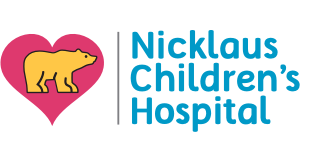Search results
-
Polydactyly for Parents
Polydactyly is when a baby is born with an extra finger on the hand or an extra toe on the foot. It can be on one or both hands or feet.
-
Idiopathic Scoliosis for Parents
Kids of any age can have idiopathic scoliosis, but it's usually found when a child begins going through puberty. Find out more about the signs of and treatment for idiopathic scoliosis.
-
Fibular Hemimelia for Parents
Babies who have fibular hemimelia are born with a short or missing fibula. Experts who treat bone problems have several options to help kids with a hemimelia.
-
Neurocutaneous Syndromes for Parents
Neurocutaneous syndromes are genetic disorders that lead to tumor growth in various parts of the body. Learn how to maximize the quality of life for children with these diseases.
-
Spina Bifida for Parents
Spina bifida is a birth defect that involves the incomplete development of the spinal cord or its coverings. It's usually detected before a baby is born and treated right away.
-
Scheuermann's Kyphosis for Parents
Scheuermann's kyphosis is a condition affecting the upper back that makes it rounded so it looks hunched over.
-
X-Ray Exam: Bone Age Study for Parents
A bone age study can help evaluate how a child's skeleton is maturing, which can help doctors diagnose conditions that delay or accelerate growth.
-
Congenital Kyphosis for Parents
Kyphosis is a rounding of the back that some children are born with. It makes the back look hunched over.
-
Splints for Parents
A splint is a support device that keeps an injured area from moving. Doctors often use splints to hold bones and joints in place so they can heal after a fracture.
-
Kyphosis for Teens
Your spine, or backbone, normally curves forward gently as it runs up your back. Sometimes, though, someone's back can be rounded too far forward, which is a condition known as kyphosis.


 Note: All information is for educational purposes only. For specific medical advice,
diagnoses, and treatment, consult your doctor.
Note: All information is for educational purposes only. For specific medical advice,
diagnoses, and treatment, consult your doctor.